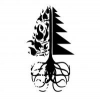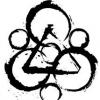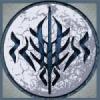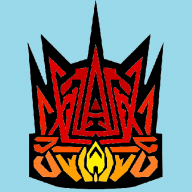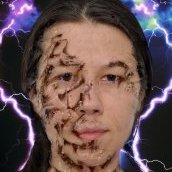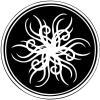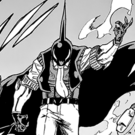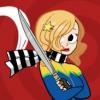Search the Community
Showing results for tags 'magic'.
-
I've been working for some time on a "magic" system for my universe. This system was built to support a more mystical element of my story for readers, but I needed to understand it's limitations clearly as the author. So, I'm wondering. If I give you guys three rules, could you tell me, if you had those abilities–what would you be able to do? Some background. In my universe, there is a discovery of a particle that effects the status of elements. Meaning, these particles are what tells elements what they are and where they are (imagine the code in a computer. Change it and you change the program itself). Here are the abilities: Manipulators can... Aggravate/Adjust the location of these particles inside atoms, resulting in the movement of the entire particle. Can force a shift of particles from one element to another. Repair decaying atoms and rejuvenate them by renewing their structure from another source. The constraints (Most important part and they correspond with their listed power. 1 to 1, 2 to 2) Aggravation means that you can speed up or slow down particles, resulting in hot/cold. (restrictions tie into #2 as to cascades) Particles can be moved if their location is changed, but only a specific distance. So you could move an object 100 kilometers away, then another 100, then another 100. It is restricted to 100 kilometers per shift Shifting an element is easier if it cascades. So you could take a block of 26 Fe: Iron and shift it fairly quickly to 25 Mn: Magnesium or 27 Co: Cobalt. But changing a whole block of composite stone would likely fail because of different particles. You could change pieces of it though, one at a time. Decaying atoms take the energy from other compatible sources. So a plant could be kept alive if you have another plant near it that you transfer energy from. Two more things. Adjusting the particles is tasking, meaning that burnout can happen quickly the less training and skill you have. Also, Manipulators live for a long time, roughly 250 years because of their abilities to rejuvenate. But they go insane. There is no known cure. This is a lot, but if you have questions, just send them my way. I'm excited to hear what awesome stuff you could do with this! Have at it
- 31 replies
-
1
-
- magic system
- rules
-
(and 4 more)
Tagged with:
-
I've started trying to write a little more seriously, to get practice in. This world started as a place to practice in, but I am liking it, and so plan to continue. This is a world where musical notes are given attributes. eg: Time Note, Gravity Note Combining these attributes in certain combos and proportions can create all kinds of effects. https://www.dropbox.com/s/3rojsqdmk4s4vub/The%20Listener.docx
-
So I've been toying with a magic system for a while. It involves verbal commands to accomplish tasks, control objects/elements, etc. The more eloquent the command, the more powerful it is. That's all I've got. I've been trying to write a full length novel for some time now and I just need a magic system before I start. Thus, any help and/or criticism would be appreciated. Thanks in advance.
-
So the world I'm creating has an elemental magic system that is fairly typical. In a nutshell, the magic is an innate, hereditary power giving the user the ability to perceive, manipulate, create, or destroy one of the world's eight major elements: Fire, Earth, Life, Water, Air, Spirit, Light, and Dark. At a glance it resembles a cross between elemental bending in Avatar and channelling in the Wheel of Time. (I might make a post discussing the system in detail at some point, but for now it's only relevant that it exists.) But I really liked the idea of a scientific or mechanical way to access magic that we see in Roshar's fabrials, and that is hinted to exist in southern Scadrial. So I started thinking about how something like that would work in my world, and this is what I came up with. The basic premise is in utilizing elemental energy stored in gemstones (which obviously must glow when they are charged) by imbuing the energy into geometric symbols which have (more or less arbitrary) spiritual connections to the different effects the energy can produce. Now, don't look at me like that. Sanderson isn't the first author to use gemstones as magic batteries. The magic system I'm developing here is not a blatant rip-off of fabrials. It only looks that way. I'm interested in what kinds of technology you, my friends, can come up with using this system. Airships? Railguns? Laundry machines? You tell me. Now, in more detail: there's a strong connection between light or colour and the elemental energy that makes up this world. The spiritual character of different substances causes this energy to take on different elemental colours. Here's an overview of the different colour associations. - Red: Hot gases and incandescent material undergoing combustion - Orange: Metal, molten earth, charcoal - Yellow: Minerals, salts, ceramics, soil - Yellow-Green: Wood, hair, silk - Green: Organic matter - Green-Cyan: Oils, fats - Cyan: Water, ice - Azure: Heavy gases and vapours, steam - Blue: Light atmospheric gases - Violet: Rational mental phenomena - Magenta: Vital psychological phenomena - Rose: Emotional phenomena - White: Visible light, elemental colour Once elemental energy acquires colour, it is restricted to interact with the associated substances. Ambient elemental energy pervades the world and takes on colour according to nearby substances. Importantly, the substances within living beings are protected from interaction with elemental energy by a natural magic associated with all life. Okay. So there's natural magic on this world which causes any transparent material, upon intense illumination by sunlight, to form into a reservoir for elemental energy. Further illumination causes the material to charge with elemental energy, with an elemental colour identical or at least similar to the colour of the material. Deformation of the material ruins its ability to store energy, so you need rigid, high-strength materials to create good reservoirs. Hence, gemstones. When a reservoir material is charged, it glows with the appropriate colour. Certain arcane symbols can unlock the power of elemental energy, expending it to produce different effects. These symbols are all built upon a circle and are referred to as activation circles. (You may be feeling an FMA vibe right now. As an aside, I'm thinking the basic elements of the symbols will be circular arcs inscribed in the main circle, rather than straight lines.) When a high density of elemental energy, such as that stored in a reservoir, is brought near such a symbol, the energy begins to flow through the activation circle, expending it and releasing its power. (Electrical analogy: the reservoirs are capacitors and the activation circles are resistors.) The symbols are discovered by experimentation or from ancient texts in reference to the innate elemental magic system. It is pretty difficult to discover new symbols. Modifiers can further specify the behaviour of the activation circles in some ways. Activation circles can be constructed from anything - they can be built from a material or carved into one, drawn on a surface with ink or chalk or whatever you like, formed from a shadow or a projection - as long as the symbol is there, there is some amount of elemental energy that will cause it to function. However, the circles function better if they are constructed from a material associated with the element, allowing the energy to flow through them easily. They function even better if they are made from specially prepared conduit materials, which are near-perfect conductors of elemental energy. (One of the kinds of activation circles can transform a material into a conduit for a certain colour of elemental energy; it so happens that this works especially well for copper, silver, and gold.) So one could build elemental energy activation devices to access the various effects for the different colours of elemental energy. For simplicity I'm going to call devices, activation circles that are constructed from conduits and powered by reservoir gemstones, fabrials. This is just for fun and I'm not planning on publishing any time soon, so I can change the name later, haha. Here is the list of the different possible activation circles: Perception - the circle stretches the energy within it into a perception field that extends throughout the vicinity of the circle. The more energy placed within the circle, the greater the range. When elemental material is detected, some of the energy is pulled back into the circle. This will either cause the reservoir to light up, or it can be siphoned away by a conduit to power another circle. Modifiers can focus the perception field in a certain direction, or create a strongly focused perception field within the circle (which has some uses later on). Attraction or Repulsion - the circle generates a force field, anchored on some elemental material at the center of the circle, that acts on similar elemental material in the vicinity of the circle. The reaction force on the anchor is equal, opposite, and collinear with the force on the outside material. Modifiers can focus the force field in a certain direction, or anchor the force field to the reservoir material within the circle rather than an elemental material. Energy is only expended when an actual force is being generated. The circle can be tuned to target a specific material by coupling it with an inside-focused perception circle containing a sample of the target material. Heating or Cooling - the circle expends energy to add or remove heat to elemental material within the circle. Bend Light - the analogous activation to Attraction or Repulsion for fabrials utilizing Light (white) energy, it can bend light towards or away from the circle. Creation or Destruction - the circle converts elemental energy into elemental material, or vice versa. This is extremely energy-costly, as there is a high activation cost on top of the large amounts of energy that go into making physical material. (Though you still gain energy from destruction, there is a net loss in converting from material -> energy -> back to material.) Creation circles can be coupled with an inside-focused perception field to duplicate the sample material, otherwise they create the most representative material for energy of the given colour. Modifiers can help to constrain the structure of the created material. Possibly, creation and destruction circles could be combined into a single transmutation circle that transforms the material while mostly keeping its shape. (Such transmutations have to stay in the same element, however.) Colouration - the circle expends energy to change the elemental colour of material within the circle. This is used to create conduit materials; it can also be used to protect material from interaction with elemental energy by supressing its elemental colour entirely. There may be activation circles for interacting with living beings, related to the elements Life and Spirit, but by necessity they would be incredibly complex. I may need to come up with a secondary process for generating these interactions, maybe by somehow capturing the essence of a natural process and replicating it. I'd like to see fabrials that can do healing or emotional manipulation. Alright. I believe that was sufficiently long. How does it look?
-
2
-
- magic
- technology
-
(and 2 more)
Tagged with:
-
Hey 17th Sharders! What I would like to discuss today is the compatibility of the magical fuels (Stormlight, Breath, etc.) across the Cosmere. - I just finished rereading Hero of Ages and had this thought as I was reading Vin's fight scene with the Inquisitors, when she draws on the mists to fuel her Allomancy. Could Allomancers use other forms of power to fuel Allomancy? Say... Stormlight? - Here's an explanation on my reasoning: A Shard manifests itself in three ways, solid, liquid, and gaseous. Using Preservation as an example we have Lerasium beads (solid), the Well of Ascension (Liquid), and the Mists (gaseous). We already know that one gaseous form of power (Stormlight) can substitute for another (Breath) in Vasher/Zahel's case. What are your thoughts? What evidence have I missed that says either yea or nay to this theory?
- 28 replies
-
1
-
- stormlight
- breath
-
(and 3 more)
Tagged with:
-
What would Hoid do if he had his own Shard? My personal theory is that he would create his own magic system based off of himself, called Scourgebinding. Instead of bonding with spren to gain powers, Scourgebinding involves bonding with articles of clothing. Thus, the Tights Radiant were born. (Hoid can be a very cruel person when he’s not trying to stop violent Shards.) Thievery: The Scourge of Skillful Kleptomania. Those with this scourge impulsively and expertly pickpocket anyone they meet. Bafflement: The Scourge of Utter Stupefaction. Those who use this scourge gain the ability to make all people nearby gawk at them in complete confusion. Annoyance: The Scourge of Obsessive Irritation. Those who have this scourge gain the ability to make all around them groan in pain, as they receive an eternal headache. Insanity: The Scourge of Incoherent Blather. Those with this scourge have the uncanny ability to cause others around them to back away in fear. Stalking: The Scourge of Alarming Pursuit. Those with this scourge become ultimate ninjas, capable of walking right behind people without being noticed, and instinctively knowing the location at which someone lives. Disguise: The Scourge of Surreptitious Sneakiness. Those who have earned this scourge have the ability to instantaneously grow any kind of mustache. Insufferable Conceit: The Scourge of Willful Snobbery. Those with this scourge have the ability to cause everyone they meet to instantly lose their respect for them. Insult: The Scourge of Offensive Heckling. Those with this scourge are granted the ability to break friendships, end relationships, and start battles in the most hilarious and ironic ways possible. Humor: The Scourge of Friendly Mocking. Those using this scourge can make all around them giggle stupidly, laugh obnoxiously, or chuckle incoherently. Wandering: The Scourge of Aimless Striding. Those with this scourge have the honorable ability to take the longest possible path to reach a destination, and to invariably get lost in the most straightforward places. First Ideal of the Tights Radiant: Novelty before Redundancy, Alias before truth, Goofiness before fashion. Windstunner: The Tights Radiant Order of Thievery and Bafflement. Windstunners were an order known for their underhanded methods of robbery. They would often act like total buffoons, attracting attention and causing complete confusion. Suddenly, they would strike down upon their foes, pickpocketing them and running away and laughing maniacally before their victims were able to come to their senses. The Windstunners also taught their own squires about the art of deceit. In truth, the Windstunners only recruited squires so that they could be pickpocketed. Windstunners are bonded to Beltspren. Second Ideal of the Windstunners: I will confound those who cannot confound themselves. Third Ideal of the Windstunners: I will confound even those I hate, so long as it is humorous. Sighbreaker: The Tights Radiant Order of Bafflement and Annoyance. The Sighbreakers were one of the most despicable orders of the Tights Radiant. They had numerous verbal spars with the Windstunners, because they believed that the Windstunners were using the Scourge of Thievery immoral. During these verbal battles, the Windstunners would often stealthily pickpocket the Sighbreakers. The Sighbreakers were named for the sighs of agony that come from anyone within audible range their Annoying drivel. Sighbreakers are bonded to Hatspren. Second Ideal of the Sighbreakers: I will put obnoxiousness before all else. Cussbringer: The Tights Radiant Order of Annoyance and Insanity. Cussbringers were a reckless order, often hanging at the edge of sanity (and cliffs). They were a particularly vicious order because of their combined use of the Scourge of Annoyance and Insanity. Whereas the Sighbreakers would eventually feel remorse for those they Annoyed, the Cussbringers were Insane; they would never shut up. The term “Cussbringers” was coined quickly, and the other orders, particularly those with the Scourge of Insult, would line up and systematically shout curses at unruly Cussbringers. Cussbringers are bonded with Sockspren. Hedgedancer: The Tights Radiant Order of Insanity and Stalking. The Hedgedancers were one of the most disconcerting orders, often found sneaking on top of hedges or atop roofs. As they had the Scourge of Stalking, they were impulsively compelled to follow and spy on those they felt were suspicious. Of the two orders with Scourge of Stalking, the Hedgedancers were by far the least sneaky and the clumsiest. They would try to attract as much attention to themselves as possible, but their Stalking ability also caused them to become impossible to see by those they were Stalking. Hedgedancers tended to find the highest places possible to Stalk their victims. Once they found their victim’s house, they would enter and their Insane Scourge would take over, forcing them to juggle fruits or stand on one foot or do other impractical things. The Hedgedancers are bonded to Glovespren. Second Ideal of the Hedgedancers: I will stalk those who think they have been forgotten. Truthstalker: The Tights Radiant Order of Stalking and Disguise. The Truthstalkers were the ultimate masters of ninja-ness. They could impersonate anyone and Stalk anyone they wished. The other orders used them as spies, informants, and pranksters. The Truthstalkers themselves wished to find out the truth behind human behavior. But after centuries of fruitless searching and Stalking, they realized that there are no truths behind human behavior; humans are completely irrational. Truthstalkers are bonded to Jacketspren. Fightweaver: The Tights Radiant Order of Disguise and Insufferable Conceit. The Fightweavers were a sly, conniving order who would spark fights and wars. With the Scourge of Disguise, they would imitate a random person nearby, and with the Scourge of Insufferable Conceit, they would provoke anger and jealousy into anyone who heard their words. Then, the Fightweaver would use Disguise to return to their normal self, and the mob would attack the person whom the Fightweaver was imitating. Due to their underhanded techniques, they were not well-liked by the other orders. The Fightweavers did not have any Ideals other than the First Ideal. Instead, their power grew as they started conflicts. Fightweavers are bonded with Scarfspren. Blame-Someone-Elsecaller: The Tights Radiant Order of Insufferable Conceit and Insult. The Blame-Someone-Elsecallers were known for accusing others for their crimes. They were the most provocative order of the Tights Radiant, shouting out Insults while simultaneously praising their own magnificence. The Blame-Someone-Elsecallers were often not successful in their attempts to blame others, so they hired Truthstalkers and Fightweavers to Disguise themselves as distractions. The Blame-Someone-Elsecallers are bonded to Vestspren. Witshaper: The Tights Radiant Order of Insult and Humor. The Witshapers were called the most holy of the orders, and they often had visions with the great and mighty Hoid. Through him, they learned the wittiest Insults and puns to torture their victims with. Speaking with a Witshaper was a great honor, as much as it was horrible and agonizing. The Witshapers instigated wars, baffled linguists, and tortured passers-by with their sleight of tongue. To keep up their reputation, they brought tall, foldable stools wherever they traveled. Once they reached a place they felt was important, they set down their stool and sat atop it, shouting down Insults at whomever was unfortunate enough to pass by. Witshapers are bonded to Cloakspren. Phonyward: The Tights Radiant Order of Humor and Wandering. The Phonywards were Wandering travelers who spread warmth and joy throughout the world. They used their Humor and made witty jokes to anyone they saw. They were constantly Wandering, and were a rather superfluous order since nobody could ever locate them unless they were not looking for them in the first place. The reason that the created such witty puns and Wandered constantly was that they were actually a very insecure order, and would search all their life for a place to fit in. They used their jokes and puns to cover up their insecurities, which is why they were known as the Phonywards. They are bonded to the reclusive Sandalspren. Bondbreaker The Tights Radiant Order of Wandering and Thievery. The Bondbreakers were an order of only three, because Hoid would never be so cruel to let more of them run rampant in the world. Actually, yes he would. But, in any event, there were only three Bondbreakers at any one time. It was up to the Bondbreakers to instigate rivalries and wars between the orders of the Tights Radiant. They Wandered about, finding other Tights Radiant members, and used Thievery to stealthily steal from them. The victims blamed the other orders, and wars broke out between orders. But the Bondbreakers’ work was never finished. Bondbreakers are bonded with Trouserspren. Second Ideal of the Bondbreakers: I will divide instead of unite. I will break men apart. …And meanwhile, Hoid will be sitting back in his Shardic castle, laughing at the foolish things the petty mortals attempt to do with this magic system.
- 11 replies
-
21
-
This may be a stupid question, or idea, but.... There I was, thinking about Hoid the other day, and the fact that it is apparent that he is able to use or access several forms of magic from different worlds in the Cosmere Specifically I believe that Hoid uses or references: Allomancy (we have a WoB on this one, as Hoid mixes something into his mug while attempting to change people's reaction to his story), lightweaving (to make images in the smoke while telling Kaladin a little story, and mentions having Perfect Pitch before playing his flute) making a reference to BioChroma. So that is when it struck me. Hoid was SURGEBINDING. He used Lightweaving. How on earth (or Roshar I guess) did he do that??? From everything we know (at least everything I know anyhow), surgebinding requires a Nahel Bond. Does Hoid have a Spren?
-
Hi, I made a kind of reference document (mostly stuff from the wiki) on Heralds and Surges and chapters (in progress) + some wild guesses, I thought maybe it could be useful to someone: https://docs.google.com/spreadsheets/d/1R7NoW7vMfWMSezANJ1Me7p4rK72kutmnc5kuMKugqQU/edit?usp=sharing
- 10 replies
-
4
-
- stormlight archive
- spoilers
-
(and 5 more)
Tagged with:
-
In all fairness, this is not a real theory - because it's kind of been confirmed by Brandon. But when I was searching through the Theoryland database, I found an old WoB I had either missed in the past, or hadn't considered in its due depth: The part about "wounded" spirits being easier to fill with something else sounded pretty much exactly like the description of Words of Radiance from Brandon's site: The reason I am so excited about this is because of the scope of the older WoB. In the Words of Radiance bit, we've been (correctly) assuming it refers to the Knights Radiant - a Surgebinder must have a "broken soul" for a spren to bond with him or her. But considering the other quote and how... free of context it sounds (e.g. Brandon says "it has to do with a person's spiritual makeup," not "it has to do with an Allomancer's spiritual makeup"), I am beginning to think that this applies throughout the cosmere. The good news is, Nalthis might be pretty easy to explain in a way that fits the model. This whole "broken soul" thing is essentially a requirement people must meet before they can start doing magic; and since everyone on Nalthis could do magic, then they must all have broken souls. Which, in a way, they do. With all the Breath being passed around, I get the feeling that the spiritual make, the sDNA, of pretty much everyone is all over the place. Changes to the spiritual aspect of things take time to sink in, the soul needs time to adapt - and if people are constantly trading BioChroma and using it to Awaken things, then their spiritual aspects are constantly shifting and changing. The bad news, Sel might be a little more difficult to explain. The Elantrians and AonDor are easy - the Shaod comes and rewrites a person's spiritual aspect, breaking their soul if you will, and now that person can do magic. The requirement doesn't apply to the Shaod because it's external to the future Invester; It works the same way lerasium does - you don't need to be spiritually wounded to eat and burn a piece of lerasium and become an Allomancer, that's a process you personally don't need magic for. The other magic systems on Sel, though... well, we don't know enough about them. And I can't figure out how they fit the model from the little we do know about them. Forging might be the easiest to explain, because of reasons similar to the ones I provided for Nalthis. If you live in MaiPon, where Forging is pretty common and accepted, then there is a good chance you've been stamped or Resealed at one point or another - which, almost by definition, would have wounded your spirit. From this point on, it would've been easier for Brandon's "something else" to find its way in. Something like the Dor, maybe. TL;DR: A person's soul / spirit / Spiritual Aspect must be modified in a way that would live it "wounded" in order for that person to gain access to magic, the ability to Invest. This spiritual damage could be caused by emotional and / or physical trauma (Surgebinders and Allomancers), the simple passing of (spiritual) DNA from parents to child (Feruchemists), an external force that targets the spirit (Hemalurgically created Mistings & Allomancers, Elantrians, Dakhor monks), or high levels of exposure to Investiture that touches the spirit (anyone who has been Forged or Resealed (or Bloodsealed?), or practically everyone on Nalthis).
- 37 replies
-
10
-
Okay, so we know that Roshar has three magic systems, right? Surgebinding, Voidbinding, and something to do with Spren and Fabrials. Surgebinding seems like a pretty physical power system. Whatever the magic system with Fabrials is, it uses Spren, which are cognitive aspects. And the Void is often used as a reference to the afterlife, which i think will make it a spiritual power. Will Brandon make 3 sets of powers, one for each physical, cognitive, spiritual aspect, but with similar outcomes? Or will the outcomes be completely different? I don't know, but I like the idea of each one working with only one aspect.
-
So I'm not sure where I got this idea in my head, but it seems to be pretty common: most people believe that the highstorms are somehow related to Honor (or in the case of vorinism, Jezrien). I think it's been thrown around that it's the remains of his shard's investiture raining back to Roshar and recharging spheres, because Dalinar only has his visions (sent by Honor) during highstorms. While this is certainly a reasonable assumption, I was just thinking today: what if the highstorms are actually caused by Cultivation? I always found it strange that stormlight (investiture from the storms) could be so easily stored in gemstones, which have nothing to do with binding, oaths, or honor of any sort. (Words of Radiance preview spoilers!) On the other hand, Almost every aspect of the surgebinding process seems to relate to Cultivation. The storms themselves are nourishing to plants, the investiture accumulates in gemstones (which are grown over long periods of time) and promotes vigor and healing in whoever holds it. Soulcasting is the closest it comes to Honor, with bargains being struck. Overall, the flow of power in the surgebinding system seems like a very Cultivation type thing to do: The world is showered in stormlight, which increases the amount of life and energy available to the people it affects. So what if Honor's only contribution to magic on Roshar is the Nahel bond, while the actual economy of magic is powered by Cultivation? I think the coppermind says that Honor, Cultivation, and Odium all have their own planets in the greater Roshar solar system, so that would imply Cultivation has her own world to manage. From descriptions of life just after a highstorm, though, I'm inclined to think it's really her doing. Thoughts? Edit: Also, it may be the case that Cultivation is broadcasting Honor's message, which explains why Dalinar only gets them during highstorms. It could be Odium, but I don't think Sanderson would use the same Ruin/Preservation trick again.
- 4 replies
-
4
-
- highstorms
- cultivation
-
(and 1 more)
Tagged with:
-
This is an idea that came to me rather suddenly and given how little we know of Hemalurgy this will be pure speculation that contains a lot of "is this possible"-questions and no answers. Also I´m open to little tidbits about Hemalurgy that I missed which woud contradict any of this. First of all came the question "what happens to a hemalurgic spike if it stay in your body?" Given that the spike woud add a part of your soul to the one being spiked it seem resonable that you can also "keep" your soul if the spike stays in you and getting spiked didn´t kill you. Next I wonderd if a spike like this coud be shared, for example if one uses two needles connected by a thred all frome the same metal and melted together as one piece. Woud this not work because the spike rejects the second subject or create some kind of soullink between the two people being spiked. (Which woud then have to be called either hemalurgic twins or Spikebros.) If it works what woud the effects of this link be? Thelephaty, similar to what Harmony does with his spiked followers, or maybe a cognitive or spirital link. Coud the spike be removed from the second spike victim or woud his soul also bind to the sipke? And lastly this lead me to Feruchemy. If such a link were possible coud an Feruchemist with hemalurgic knowledge spike another person, not even neccesarily a Feruchmist, and use him as a "battery" for his metalminds and coud he tap them after cutting the link? Coud he only use certain atributes or coud he steal things like identity (literaly) and memory? Maybe this coud be used for murder by storing breath and making the victim suffocate or to transfer ones mind into another body. (Why must the two examples I can thing of right now be so villan like?) Any thoughts or destructive holes in this speculation?
-
Two theories in one night? Why not? This theory has to do with Identity, particularly as it ties in to region-specific magics. It uses some of the same quotes as my other theory regarding this topic, and relies on the same basic principle, but hopefully won't be nearly as long-winded. To start with, let me toss you a couple quotes. First we have this one: And then, this one (emphasis mine): Now, these two things tell us a lot about Identity and regional magic: namely, if I'm reading and interpreting these quotes correctly, that they are very much interdependent. I talk at length about that in my other theory, so for the sake of brevity I'll just say here that I believe this to be the case, and that the rest of this theory builds on that belief. So, we have on our hands a magic - or set of magics, depending on your perspective - that very strongly depends on Identity. What else do we know about Identity? That it's a Feruchemical attribute, of course! Now, we've debated on this forum about the use of Feruchemical Identity before, but the discussions that I was a part of at least focused primarily on its use on Scadrial specifically. But wait, you ask, who else was just confirmed to have Feruchemy? Oh yes, that's right. None other than Hoid himself. Now things are getting interesting. Suddenly we've gone from exploring the use of Identity solely on Scadrial, to applying its potential benefits to a known worldhopper with significant knowledge of the Cosmere and the worlds he visits. Dangerous indeed. Now, the canon is very clear that there isn't much in-world knowledge about Feruchemical Identity yet, or if there is, it's a closely guarded secret. So we don't have much to go off of here. But given the quotes pasted above, I'm comfortable proposing that Feruchemy could theoretically be used to swap out regional magics at will. I imagine that the process would go something like this: Store as much of your own "default" Identity as you possibly can. Rewrite yourself a new Identity as part of the region whose magic you want to use. (If my other theory holds true, this could potentially be done by having a skilled Forger rewrite your cultural Identity; other suggestions are also welcome) If you want to create ways to access more magics, repeat the process. Of course, this requires a lot of effort, and being able to Compound would make this process much more efficient, but my theory has less to do with how practical it is and more to do with the implications this would have on our understanding of Realmatics and Identity if it proves to be true. Also, Hoid also has lerasium. Just saying.
-
Having read through TWoK several times I can describe the information on the Heralds as sketchy at best. Out of the 10 I believe only half are named directly and the name of the name varies on the teller. For example in the prologue the heralds are Kalak and Jezrien whereas in the prologue they are called Kelek and Jezerezeh. This is obviously due to the gap in time or change of language. However, if one looks at the ARS Arcanum one notes there are ten essences each with a name /number which seems to correlate to the name or names of a herald. Using this theory, the 9th essence Tanat would depict Talenel or Talenelat (again different names, same herald). So where is this all headed? Shalash. What? As Szeth is passing one of the corridors he notes a row of statutes depictig the heralds of Vorin theology. However, Szeth notes that one of the heralds is missing. Why would this be inserted? If it was just to introduce culture or religion, why would one be missing? Furthermore why explain that Szeth thinks it odd since Gavillar is a devout Vorin constituent? Question: Why is Shalash's statue missing? I have entertained ideas that he could have been the Herald to suggest breaking the Oathpact but am uncertain. However, before Gavillar died he was big on the Way of Kings and this could have been the reason that Gavillar removed the statue. I believe something in the book caused him to remove the statue as there would be no other alternative I can see for removing Shalash's statue. Why is this important? Dalinar is following Gavillar's footsteps by reading the WoK. So one could assume that he will come to the same conclusion of his brother. This could prove to be even more significant if the Oath pact is reestablished which seems somewhat likely seeing Dalinar leading like Jezrien or Kaladin protecting like Jezrien and healing like Vav or Shallan/Jasnah being learned like Nan even Szeth correlates to Chach who is brave and obedient. This brings up the additional discussion of whether or not there were female Heralds. I would say yes since on the opening inside cover you see ten faces surrounding the border of Roshar and the Hourglass of Vorin Theology and some are definitely feminine. Does any of this indicate that Shalash was acting under Odium's influence to break up the Oathpact? ?? That is pure speculation, but again why would Gavillar exclude Shalash one of his "gods." Additionally, along the lines of heralds the hourglass depicts 10 major symbols which I believe correlate to an essence, a herald, and a Dawnblade. If you look at the front cover of the hard bound book one notes a blade. The hilt of this blade corresponds to one of the major symbols on the inside of the front cover which leads me to the conclusion that the major symbols are Dawnblades and the minor ones correspond to different types of Shardblades and plates respectively. Also, I find it odd that the back cover of the book says there are 4 for whom we watch when this world seems to based off of tens. Is it possible that these four will join into the Oathpact to bring the number to 5 which also appears in the book. Indirectly related to the Heralds is Gavillar's final words to Dalinar through Szeth "you must find the most important words a man can say." This could be interpreted as a reference to the WoK, the creed of the Knights Radiant, the next book WoR, or a combination. I believe it refers to all of three, specifically in context of the next book. Dalinar-- where does his supernatural use of shards come from? ex. fighting the chasmfiend. The only conclusion I can come to is the Old Magic which will if true certainly come to fruition in the next book. And as a side point why would Dalinar visit the Old Magic later in life since it occurred after the death of his wife. Who knows? It is all speculation from here. Hope this post has been interesting or helpful. My ,main points are with the Heralds and correlating them to characters and essences as well as the lack of Shalash.
- 3 replies
-
- heralds
- dawnshards
-
(and 3 more)
Tagged with:
-
I've been agonizing about not having a very good magic system for my novels, but several months ago, that finally changed. Below is a set of guidelines and lists for my magic system, known as the Nine Disciplines. This is the magic system I am using for the epic fantasy trilogy I am writing, The Proanadi. The way it works is thus: any known magic-user has access to one, several, or all of these Disciplines. All "magic" as people know it derives itself ultimately from the Nine Disciplines. Where magic-users differ is WHERE they get their power from--their power source. There can also be differences in areas of focus, and ways that they use the different disciplines (because, the possibilities within the Disciplines are almost unlimited). Here are the Nine Disciplines below, grouped as they would be commonly, with three groups of three: Material 1 Physical (change in physical matter) 2 Sensory (change in perception) 3 Elemental (manipulation of the elements) Ultramaterial 1 Influential (change in feeling) 2 Intellectual (change in thought) 3 Essential (manipulation of life energies) Supernal 1 Continuous (disruptions in space or time) 2 Creative (creation of new energy or matter) 3 Potential (manipulation of force) Examples of something being done with each Discipline below: Physical: Enhances your (or another's) strength Sensory: Tricking another individual's perceptions, making you effectively invisible Elemental: Shooting fire from your hands Influential: Providing a morale boost to your comrades Intellectual: Tampering with someone's memory Essential: Bringing someone back to life Continuous: Teleportation (space) or slowing time (time) Creative: Creating food and water out of nothing Potential: Throwing up a wall of pure force Now, there are many different limitations and tricks associated with each Discipline, and points where they overlap, but different Disciplines work better in different situations. Please feel free to comment with ideas for changes, possible abilities within each Discipline, or discrepancies as you see them. Where the line is drawn between the different types of magic-users in the world comes from one major thing (though there are other, less important differences): Power Source. Where do they derive their power from? Below is a list of some D&D classes (not all of these are actually going to be used in the books, as that would kind of be plagiarizing, but it provides a good example for how different magic-users get their power) and some other magic-users and their power sources: Wizards – Power through learning (words and rituals that channel the energy) Clerics – Power through prayer* Sorcerers – Power through lineage (having some form of magical creature’s blood in your DNA) Favored Soul – Power through divine connection* Dragosamns (reptilian humanoid shamans) – Power through dragon totems (similar to Stewardic power)** Roshi (short reptilian humanoids) – Power through Chaos** Druids – Power through natural connection and energy Talir-Knights (though the original users of this form of power source are many of Serragon’s “monsters”, such as dragons) – Power through one’s own energy Demons – Power through destruction (breaking down of matter or energy) * Both Clerics and Favored Souls gain their ultimate power from the Stewards (gods). Only the means are different. ** Although both Roshi and Dragosamns gain their abilities through their dragon blood, their actual power sources come from outside their bloodline, unlike sorcerers. If you have any questions about who or what these types are, feel free to ask. That is the extent of it, I guess. There is much more to nail down, obviously, but that is why I post this on here, FOR IDEAS! Thanks for all of your time, and God bless!
- 5 replies
-
1
-
- magic system
- magic
-
(and 2 more)
Tagged with:

